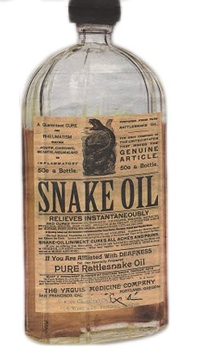Saturday, December 27, 2014
Wealth Effects and Social Casino Gaming
In this post, I want to emphasize the importance of wealth effects even for empirical data. I have used the wealth effect implicitly or explicitly several times already, so I hope to clarify it in the remainder of the post.
Let's begin by thinking about social casino games. One advantage they offer over land based games is that you can perform experiments by offering slightly different versions of the game to Players in what is essentially real time.
This should be great! Now we can use the basic t-tests that we learn in every intro to statistics course ever taught. Except very quickly we start to run into some serious problems, too much seems to be statistically significant. Another problem is that holding the Return to Player fixed, while putting more money in one feature necessarily means taking money out of the other...so which changes drove the results? To address these kind of behavioral questions we have to turn to theory.
Rather than construct the experiments by forcing the expected value of the Return to Player to be equal, I would try to establish a wealth effect. What I mean is that say I had a 95% Return to Player game. What would be the major behavioral results of giving them the exact same game at 96%, 97%, 98%...? We can learn this by changing how much the Player pays to play the game. This has the advantage of affecting all features of the game equally.
The simplest result would be Players realizing they are getting an x% premium, which induces them to play y% more spins. But I might expect that some segment of Players are betting below the maximum, playing less expensive games, or even avoiding volatile games altogether. (Bear in mind that the current Social Casino Player has on average less of a taste for volatility than does a Vegas gambler.) For these "corner solution" Players, after giving them a premium we might even see them play less total spins but shift towards a more expensive/volatile experience.
Once the range of responses is established for the various segments of the Player base, then we have a standard with which we can compare our slightly different games. In essence, what we are doing is asking how does jumbling the money in the game around compare to just giving money directly to the player.
The open questions to me are: how stable will the Player segmentation be? what is the best way to establish the wealth effect...should the Player know she is getting a discount...should it be based not on what you pay but maybe a random but frequent small award? This is the kind of research program that could help us test the hypotheses of the previous posts.
Friday, December 26, 2014
For Players It's Not Just Risk and Reward
One area where formal academic economics is very behind is modelling the gambler. There are definitely many interesting ideas out there about how to model a gambler, particularly as concerns his seeming taste for risk. However like most projects aimed at modelling irrational people, there is little consensus and even less data backing up one theory versus another. Rather than try to answer the question once and for all, it may be more useful to try and model the Player who chooses to play slot machines. We will see that even a little bit of formal thought helps us to tell a compelling story about the direction of the slot machine market.
I think it is important when looking at a slot machine to
realize that when a Player puts money in it, a whole lot of different outcomes
can occur, and here we are not just talking about monetary outcomes. As a consequence we should think about
modelling slot machine demand as a demand for many different goods at once, all
of which live inside the slot machine.
Above all we must recognize that Players will differ in their demands
for the sub-components of the slot machine, just as their taste in art or music
varies.
Some Players are mostly in it for the big win, and slot
machines offer some of the highest returns.
Other players may be more interested in a more casual experience
comprised of seeing a lot of different symbol combinations paying moderately well. Since slot machines have a lot of possible
combinations, understanding every Player’s experience can be difficult, but
understanding the big wins is not. They
happen rarely, and they pay in large ratios, sometimes over 1000x’s bet.
Thinking back to the Great Tightening, when Casinos across
the board reduced their Returns to Players, not all Players were affected
equally. Manufacturers are reluctant to
take the biggest prizes out of a game and often might leave the odds of bigger prizes relatively unchanged. Usually in
order to reduce for example a 90% RTP to an 85% RTP, smaller prizes will be
adjusted.
As we noted in the Great Tightening post, reducing the RTP
has at least a wealth effect in that it makes Players on average feel
poorer. However, that wealth effect may not have
been big enough to drive out players chasing big wins. That 5% difference in expected return, was
probably not coming from that 1 in a million payout that the big win chaser is
after. To think about it simply, that
1000x’s bet is still 1000x’s bet, and its odds haven’t changed much, if at all.
What that means is that as Casinos tighten up their slots,
they observe an increasing percentage of Players being the kind of Player
chasing big wins. They could intuit this by observing that games traditionally
considered volatile would still be doing well. This in turn causes the Casinos to request the
Manufacturers make more volatile games. And
when these games take a larger share of the floor, more Players who are not big
win chasers feel that their particular sub-demands are not being met. In fact Players are made to feel less wealthy by the increased
risk they have to take on for the same returns compared to the previous floor
composition, and again marginal Players are driven out of the market.
This is a vicious cycle, and unless you can make up for the lost Players with just the big win chasers, I don’t think it is optimal for any of the parties involved. The most important take away here is that thinking about Players simultaneously as rational agents in a risk-reward trade off and as having demands for sub-components of the full slot machine experience helps us understand shifts and trends in the market composition.
This is a vicious cycle, and unless you can make up for the lost Players with just the big win chasers, I don’t think it is optimal for any of the parties involved. The most important take away here is that thinking about Players simultaneously as rational agents in a risk-reward trade off and as having demands for sub-components of the full slot machine experience helps us understand shifts and trends in the market composition.
The Great Tightening
The 2007-2009 “Great Recession” had a profound influence on almost every market in the US and globally and to greater or lesser degrees, most are still affected. Among U.S. states Nevada, by far, fared the worst, and it can’t really be denied that the gaming industry is the largest culprit. It seems intuitive that when a potential Player’s income drops, that Player will choose or be forced to gamble less. But are there peculiarities to the Casino Industry’s infrastructure and decision making process that could have exacerbated the scenario? I suspect yes, and will argue on more or less Keynesian lines how this could have happened.
To begin, we have to consider the text-book story. When Players get poorer, in order to induce
them to keep playing, Casinos should drop their prices. Right here we run into the first problem, how
do you lower the price to the Player of a slot machine?
Once it’s on the floor the minimum bet is fixed as is the all features
loaded bet.
It would seem that land based slot machines have “sticky”
prices. But this is not the end of the
story. The slot floor operator has some
levers he can pull. When games are sold
to the Casino, they are sold with multiple different Returns to Player. In theory it shouldn't be too difficult for
the operator to choose how much Return he expects on the given machine. Now in normal times, especially on the Las Vegas
Strip, the Casino would “tighten” its games to squeeze more profit out of its
machine. This is a valid strategy if
Casinos expect that this is within the Players’ budgets, or if they believe
that they can consistently trick Players into playing tighter games.
In fact it is a mathematical law that in the long run an 85%
RTP game will have a higher return to the Casino than a 90% RTP game. But these returns are marginal returns, i.e. based on how much the Player bets, and the Player is sensitive to both returns and Wealth. We consider a Player's Wealth to be money in her possession and money she expects to make from playing games. Regardless of whether the Player has an
accurate understanding of the fact that playing slots makes her less wealthy,
she is sophisticated enough to realize she is on average getting poorer faster than she was when playing games before the recession.
So what happened, and this is well documented, is that even
Casinos off the strip tightened up, in order to squeeze out more returns on
their assets. But this decision made
their Players poorer, and on the margin Players, already facing their own
financial constraints, chose to stop playing.
We can think of this as a lesson in What Goes Around Comes Around. If Casinos had loosened their slot machines,
would that have helped? The model seems to
suggest this is a strong possibility.
As a last consideration that I will elaborate on in the
future, could this tightening have had a serious influence on the style of
Players that remained? The answer is
probably yes, and this led to the same kind of push and pull of information
that we see between the Casino and Manufacturer that can lead to market failures.
The Market for Lemons as Slot Machines
In 1970 George Akerloff published a formal model describing how asymmetric information between buyers and sellers could lead to severe market failures. The idea has had so many applications it is no surprise he would later win the Nobel Prize in economics for it. Here we will consider the implications of his ideas in the context of the downstream firm model between the buyer of slot machines (the Casino) and the seller (the Manufacturer).
The setup is straight forward, the Casino wants to supply
its customer with a high quality slot machine, i.e. is fun to play for a long
time. However the Manufacturer sometimes
produces lemons and is thus forced to sell its portfolio at a price that
averages its lemons with its top performers.
Now if we had a Manufacturer/Designer that somehow “knew”
her game was perfect, she might be unwilling to sell at this average
price. Further if the Casino has no way
of verifying that her game was indeed of the highest quality, the Casino wouldn't be
willing to pay a higher price than the average price. In essence we are saying high quality Manufacturers should leave the
market. This is called the Bad driving
out the Good.
Is this what we see in the real Casinos of today? Certainly
some Players feel that way, but I think the quality of games, if anything, has
gone way up. To account for this we could
simply assume that Manufacturers have no earthly idea when they have a good
game, and in the long run the quality of games has been driven by technology
and the wider selection of games. However,
this would only be a half truth.
Manufacturers sometimes know they have a portfolio of games that are currently popular, and Casinos want access to them.
So why might a Manufacturer sell a superior product at a lower price? This has to do with the conventions in the
industry and innovation on the part of the Manufacturers to try to establish
some guarantee of quality.
As an example, leasing agreements for high profile themes or new brands
come with ready to swap arrangements at the option of the Casino, meaning that
the Casino can switch to any game in the Manufacturer's library if the Casino is unhappy with one
particular theme. So long as the
Manufacturer is selling or renting enough of the low quality games to make up
for the loss of selling the high quality game at a lower price, the deal seems fair to the Manufacturer. It would seem this is a mutually beneficial arrangement.
Nevertheless, we want to relate all of this back to the downstream
model in the previous post. The main
point there was that the Casino wants some ambiguity to help protect their
bottom line from the Manufacturer. Combined, this could have the interesting implication that even though the Casino has a strong
incentive to provide the Player with the best possible game, in the interest of
maximizing profit it may want to occasionally purchase bad games
to keep the Manufacturer off its trail.
Trying to fit all of this in one model tells us, among other things, that at some level the quality of games being made is
tied to the amount of information the Casino is willing to share back with the
Manufacturer. And really, that shouldn't
surprise anybody, until we realize it is the amount of information the Casino doesn't
want to share back to the Manufacturer that is operative. This could manifest itself in many ways, including prices that the Casino is willing to pay for the Manufacturer's various programs. So the prices are neither accurately signalling quality nor consumer demand, what then are they signaling?The Downstream Firm Model and Asymmetric Information
Vertical integration is the most economically visible feature of the land based slot machine industry. Players play slots at Casinos which purchase the slot machines from Manufacturers. In a simple model where both the Casino and the Manufacturer are monopolists, the Manufacturer is supposed to make all the profit. The reason is that in anticipation of the profit the Casino could earn, the Manufacturer should be able to raise its prices. The result is that the Manufacturer captures the downstream Casino’s profit. We want to learn how Casinos protect their profits from Manufacturers.
As evidence that this model has some explanatory power, we should look at IGT. They are essentially monopolists as far as their video poker machines are concerned, and ask any of their customers: they pay exorbitant prices and have to agree to contracts that no other Manufacturer in the slot industry could get. As another example, many Manufacturers even take a percentage of every bet made for big name licensed game themes, which directly scales their own profits with that of the downstream firm.
Casinos don’t only sell slot machines, they purchase a variety of goods and services which they offer to their patrons. These substitutes and complimentary goods for slot machines help the Casino create its own brand and confound the profit signal back to the Manufacturer, who at best only has access to slot floor data. Modelling this kind of information asymmetry for monopolistic Casinos and Manufacturers provides a great deal of explanatory power. In a very basic model, the Casino has no incentive to share information about its prices and profits with the Manufacturer. More generally, adding such an information friction to the model helps explain the sometimes in the dark way Manufacturers go about producing games.
The slot machines however are doing the most to protect the Casinos. Slot machines sometimes take in the hundreds of thousands to billions of plays to truly capture all their dynamics with any statistical reliability. What this means is that Players, Casinos and Manufacturers have to wait for information as they try to judge a slot's performance: Players will sometimes get the wrong impression from the machine, Casinos will be over-sensitive to “bad” performance and Manufacturers will have to sit back for 6 months to a year to find out. Most of the time a Manufacturer will not have the opportunity to mark up a game's price to the Casino.
Over time Casinos have been sharing more information, but it is often quid pro quo: an information exchange about floor data for information about the slot machines. At the same time, Manufacturers are inventing new ways to gain more information: think about how at the G2E conference Manufacturers offer floor analysis and optimization solutions. The Casino is paying for the services but handing over information that could ultimately cause the Manufacturer to raise its prices. There is clearly a war for information being waged.
Ultimately I think the Casino is facing two opposing forces. On the one hand, they don’t want to give their profits to the Manufacturer; and on the other, they don’t know ahead of time which slots will be hits and which will be lemons, hence they don’t know which machines to buy. I will write more about the latter scenario in the next post.
Subscribe to:
Posts (Atom)



